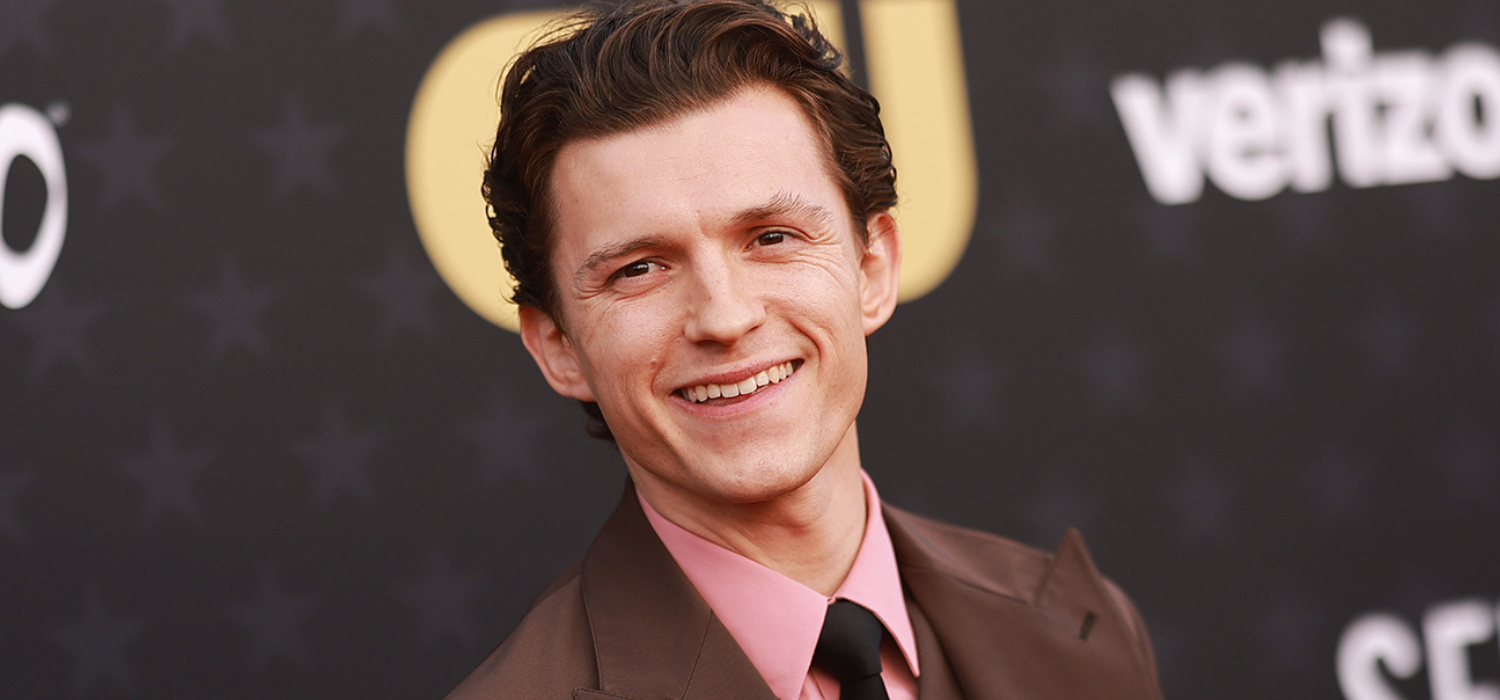Introduction
In the modern age of cinema, few names have risen as swiftly and with as much global recognition as Tom Holland. Known primarily for his role as Spider-Man in the Marvel Cinematic Universe, Holland has grown from a child actor with extraordinary talent to a global superstar admired by critics and audiences alike. His journey is not just about fame—it is also about redefining what it means to be a young actor in today’s film industry.
Tom Holland’s career encapsulates the delicate balance between blockbuster success and critical artistry. While superhero franchises have propelled him into the limelight, his performances in dramas, thrillers, and stage productions reveal a deeper versatility. This duality has allowed him to not only inspire younger generations of actors but also to influence how modern cinema embraces youth, talent, and authenticity.
Early Life and Passion for Performance
Tom Holland was born on June 1, 1996, in Kingston upon Thames, England. Growing up in a creative household—his father, Dominic Holland, being a comedian and author—Tom was exposed early to the world of performance and storytelling. His mother, Nicola, a photographer, also encouraged his creative instincts.
Holland’s interest in performing arts began during his childhood when he took part in dance classes. His natural talent for rhythm and movement caught the attention of his teachers, who encouraged him to pursue dance more seriously. Although he initially faced bullying for his interest in ballet, his determination to continue would eventually become the foundation for his future stage and screen performances.
His early training in dance and gymnastics would later prove invaluable, not only for his stage roles but also for the physically demanding performances required in action films. This combination of discipline, artistry, and resilience shaped him into an actor uniquely equipped to excel in diverse roles.
Breakthrough on Stage: Billy Elliot the Musical
Tom Holland’s first significant breakthrough came on the stage of London’s West End. After extensive auditions and training, he landed the role of Michael, the best friend of Billy, in Billy Elliot the Musical in 2008. His performance quickly impressed audiences and producers, leading to his eventual casting as Billy Elliot himself.
Portraying Billy was no small task. The role required not only strong acting ability but also exceptional dance skills, stamina, and emotional depth. Holland’s ability to embody a working-class boy striving to become a ballet dancer highlighted his versatility and commitment at such a young age. Critics and theatre enthusiasts praised him for his maturity and authenticity, qualities rare in child actors.
This stage experience was more than just a stepping stone—it was an intensive training ground. The discipline of live theatre, with its demands for precision, stamina, and emotional consistency, gave Holland a foundation that continues to influence his performances on screen.

Transition to Film: Early Roles
Tom Holland made his film debut in The Impossible (2012), a disaster drama directed by J.A. Bayona. The film, based on the true story of a family’s survival during the 2004 Indian Ocean tsunami, required Holland to convey raw vulnerability and emotional resilience. Playing Lucas, the eldest son, he delivered a performance that stunned critics worldwide.
The role earned him numerous accolades, including recognition from the London Film Critics’ Circle and the National Board of Review. What stood out was his ability to portray both innocence and responsibility—qualities that resonated deeply with audiences. This performance solidified him as more than just a theatre-trained child actor; he was a rising star with the potential to take on challenging cinematic roles.
Following The Impossible, Holland continued to explore diverse roles in films like How I Live Now (2013) and In the Heart of the Sea (2015). Each project revealed new facets of his acting range, preparing him for the massive opportunities that lay ahead.
Spider-Man: The Defining Role
When Tom Holland was announced as the new Spider-Man in 2015, reactions were mixed. Many wondered if such a young actor could carry the weight of an iconic superhero role previously portrayed by Tobey Maguire and Andrew Garfield. Yet Holland not only stepped into the role—he redefined it.
Making his first appearance as Peter Parker in Captain America: Civil War (2016), Holland immediately won over audiences with his natural charisma, humor, and athleticism. Unlike previous versions, his Spider-Man felt authentically teenage, balancing the awkwardness of high school with the responsibility of being a superhero.
His portrayal across standalone films like Spider-Man: Homecoming (2017), Spider-Man: Far From Home (2019), and the record-breaking Spider-Man: No Way Home (2021) cemented his place in Hollywood. Critics praised his ability to bring emotional depth to the role, particularly in moments where Peter Parker faced personal loss and moral dilemmas.
Beyond critical reception, his Spider-Man became a cultural phenomenon. Holland bridged generational divides, appealing to both younger audiences discovering the character for the first time and long-time fans seeking a fresh perspective. His performance was central to making Spider-Man one of the most successful franchises in cinema history.
Balancing Blockbusters and Dramatic Roles
Despite his massive success as Spider-Man, Tom Holland has consistently sought to diversify his career. He avoided being typecast by taking on roles in projects outside the superhero genre.
In The Devil All the Time (2020), he played Arvin Russell, a young man navigating violence and corruption in post-war America. The role showcased a darker, more mature side of Holland, proving his ability to handle complex psychological characters.
Similarly, in Cherry (2021), directed by the Russo brothers, Holland portrayed a war veteran struggling with PTSD and addiction. The performance required vulnerability, intensity, and a willingness to embrace unflattering realities. While the film received mixed reviews, critics acknowledged Holland’s fearless commitment to the role.
By alternating between commercial and artistic projects, Holland demonstrates an understanding of career longevity. He has positioned himself not only as a bankable star but also as an actor willing to take creative risks.

Influence on Young Audiences
Tom Holland’s appeal goes far beyond box office numbers. He has become a cultural role model for younger audiences who admire his authenticity and humility. Unlike some celebrities who project unattainable lifestyles, Holland has maintained a grounded and relatable persona. His openness about struggles, his gratitude for opportunities, and his emphasis on hard work resonate with fans worldwide.
For aspiring actors, Holland’s journey serves as proof that dedication and perseverance can lead to extraordinary success. His willingness to speak openly about his experiences with bullying and insecurities has also positioned him as an advocate for self-confidence and resilience.
Collaborations with Visionary Directors
One of the most telling aspects of Tom Holland’s career trajectory is his willingness to work with visionary directors who push him beyond the comfort of mainstream roles. While blockbuster franchises brought him international fame, his work in smaller or more experimental projects revealed his determination to evolve as an artist.
Directors like J.A. Bayona (The Impossible) and the Russo brothers (Avengers: Infinity War, Endgame, and Cherry) have praised Holland’s discipline and adaptability. Bayona often highlighted how Holland, despite being so young during The Impossible, displayed a natural ability to embody complex emotions with authenticity. The Russo brothers, who directed him in both his Marvel outings and the intense drama Cherry, commended his work ethic and fearlessness when diving into emotionally taxing roles.
By choosing collaborations that stretch his capabilities, Holland avoids being pigeonholed into a single archetype. This openness to experimentation signals a long-term career vision similar to that of actors like Leonardo DiCaprio, who began in youth-centered roles before transitioning into a wide spectrum of characters under the guidance of acclaimed directors.
Chemistry with Co-Stars
Another key element of Holland’s success is his undeniable chemistry with co-stars. In the Marvel Cinematic Universe, his dynamic with Robert Downey Jr.’s Tony Stark became one of the franchise’s most heartfelt mentor-mentee relationships. Their bond, both on-screen and off, added depth to Spider-Man’s character arc, grounding the superhero’s journey in relatable human emotions.
His rapport with Zendaya, who plays MJ in the Spider-Man films, has also been widely celebrated. Their natural on-screen connection made the films’ romantic subplots feel genuine rather than formulaic. Outside the MCU, Holland has demonstrated the same ability to adapt and build chemistry with actors like Daisy Ridley (Chaos Walking), Ciara Bravo (Cherry), and Chris Hemsworth (In the Heart of the Sea).
Such adaptability showcases his ability to complement, rather than overshadow, his colleagues. In modern cinema, where ensemble casts dominate blockbusters, this trait is invaluable. Holland’s collaborative energy ensures that he contributes to the strength of the overall film, rather than simply seeking individual spotlight.
Expanding Genre Horizons
While Holland’s career is deeply tied to superhero films, he has actively sought out diverse genres to prove his versatility. His projects span:
- Drama: The Impossible, Cherry, The Devil All the Time
- Action/Adventure: Uncharted, In the Heart of the Sea
- Fantasy/Sci-Fi: Chaos Walking
- Animation: Onward, Spies in Disguise
This genre diversity reflects an intentional career strategy. By exploring different storytelling landscapes, Holland not only demonstrates his acting range but also increases his relevance across various audience demographics. His voice work in animated films, for instance, introduced him to younger viewers, while his darker roles in dramas earned him critical respect.
Such versatility is a cornerstone of modern stardom. Today’s global audiences expect actors to transcend traditional boundaries, and Holland’s willingness to explore multiple genres positions him as one of the most flexible talents of his generation.
Industry Reputation and Professionalism
Behind the scenes, Holland is known for his professionalism, dedication, and humility. Colleagues frequently comment on his preparedness on set, his collaborative spirit, and his infectious energy. These qualities not only make him a favorite among directors and producers but also strengthen his reputation as a reliable leading man.
His work ethic was particularly evident in physically demanding films. For Spider-Man, Holland performed many of his own stunts, leveraging his background in gymnastics and dance. This physical commitment added authenticity to his action scenes, setting him apart from other actors in similar roles.
Moreover, Holland’s respect for his craft extends beyond the spotlight. He often credits his stage training in Billy Elliot as the foundation of his discipline, emphasizing the importance of rehearsal, precision, and respect for the entire production team. In an industry where young stars sometimes struggle with sudden fame, Holland’s grounded approach has earned him admiration from veterans and newcomers alike.
The Global Reach of His Stardom
In today’s interconnected entertainment industry, global appeal is as important as domestic success. Tom Holland’s career exemplifies how modern stars transcend borders. His films, particularly the Marvel entries, have grossed billions worldwide, and his name is now recognized in markets ranging from North America to Asia and Europe.
This international recognition is bolstered by Holland’s active engagement with fans through social media. Unlike the distant stars of previous generations, he maintains a direct relationship with audiences, sharing behind-the-scenes glimpses and personal reflections. This accessibility strengthens fan loyalty, ensuring that his brand extends far beyond the silver screen.
His ability to resonate across cultures also speaks to his universal appeal. Holland embodies the archetype of the “everyman”—relatable, humorous, and grounded—qualities that make him accessible to diverse audiences regardless of cultural background.

Redefining the Modern Leading Man
Tom Holland’s rise reflects a shift in Hollywood’s idea of what constitutes a leading man. Traditionally, stardom was tied to larger-than-life personas, often embodying idealized masculinity. Holland, however, brings a different sensibility to the screen. His portrayals are marked by vulnerability, youthful energy, and emotional honesty.
As Peter Parker, for example, he embodies the awkwardness, insecurities, and joys of adolescence while also shouldering the responsibilities of heroism. This balance of relatability and strength has redefined audience expectations for young male leads.
In dramas, his performances often highlight fragility and complexity rather than traditional dominance. By embracing imperfections, Holland paves the way for a new kind of hero—one who resonates with modern sensibilities by reflecting the complexities of real human experience.
Influence Beyond Acting
Tom Holland’s impact is not confined to his filmography. He has become a cultural figure who influences fashion, social conversations, and philanthropy. Known for his clean and approachable style, he has been featured in major fashion campaigns and interviews, inspiring younger fans to embrace individuality over conformity.
Beyond style, Holland uses his platform for positive causes. Through charity work and initiatives such as The Brothers Trust (founded with his family), he supports a range of global and local causes. His philanthropic efforts reinforce his reputation as a celebrity who values giving back, further endearing him to the public.
Such endeavors expand his influence beyond entertainment, positioning him as a role model in broader cultural contexts. In doing so, he demonstrates that modern actors can—and should—leverage their visibility for meaningful impact.


